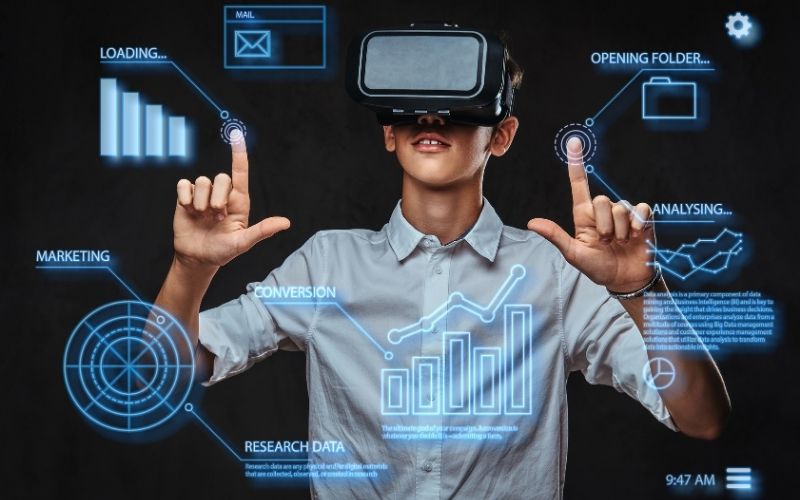Artificial Intelligence (AI) has been evolving rapidly over the past few years, and as we move into 2025, the trends shaping the future of AI are more exciting and transformative than ever before. In 2025, AI is expected to play a major role in various industries, from healthcare to finance, education, and beyond. As these technologies advance, businesses and individuals alike will need to adapt to harness their full potential.
The latest AI trends in 2025 will introduce innovations that are set to redefine industries, improve productivity, and provide better solutions for complex problems. With advancements in machine learning, natural language processing, and automation, we are on the brink of witnessing an AI revolution.
Key Points:
- AI trends in 2025 will bring significant innovations across multiple industries.
- Businesses must adapt to these trends to stay competitive and efficient.
- AI’s role in automation, personalization, and decision-making will continue to grow.
What Are the Key Latest AI Trends in 2025?
As we move forward into 2025, several key trends in AI will take center stage. These trends are expected to drive the future of technology and innovation in businesses and everyday life. Let’s look at some of the most prominent AI trends that are shaping the future.
- AI-Driven Automation
Automation through AI is one of the most significant trends in 2025. AI will enable the automation of complex tasks that were once performed by humans, such as data analysis, customer service, and even decision-making. For example, chatbots powered by AI are already transforming customer support in many industries. These AI-driven systems can provide real-time assistance, resolving issues faster and more accurately than human agents. - Advanced Machine Learning Models
Machine learning will continue to evolve with the development of more sophisticated models. In 2025, AI systems will be able to learn from data at a deeper level, improving their predictive accuracy and decision-making capabilities. Machine learning algorithms will also help businesses analyze vast amounts of data and gain valuable insights to improve products and services. - AI in Healthcare
AI in healthcare will continue to advance, particularly in the areas of diagnosis and treatment personalization. AI-powered tools will assist doctors in diagnosing diseases more accurately, identifying patterns that might be missed by humans. Additionally, AI will help personalize treatment plans for patients, improving the overall quality of care.
How Will AI Impact Industries in 2025?
The impact of AI on industries in 2025 will be transformative. From automating processes to enhancing decision-making, AI will be a driving force behind many innovations in various sectors. Let’s explore how AI is expected to impact specific industries in 2025:
1. AI in Healthcare and Medicine
AI is revolutionizing healthcare by enabling faster diagnoses, improving patient outcomes, and enhancing personalized treatments. AI-powered systems can analyze medical data and detect patterns, which will aid doctors in making more accurate diagnoses. In addition, AI will help healthcare professionals personalize treatment plans based on individual patient data, improving the efficiency and effectiveness of care.
2. AI in Finance
AI is already making waves in the finance industry, particularly in the areas of fraud detection, risk management, and customer service. In 2025, AI will play an even more significant role in automating financial transactions, detecting irregularities in real-time, and providing personalized financial advice to consumers. Banks and financial institutions will increasingly rely on AI to enhance operational efficiency and improve customer experience.
| Industry | AI Applications | Impact |
| Healthcare | AI-driven diagnostics, personalized treatments | Improved patient outcomes, faster diagnoses |
| Finance | Fraud detection, customer service, risk management | Enhanced security, improved customer service |
Important Reminder: AI will continue to enhance industries by making processes more efficient and less dependent on human intervention.
3. AI in Retail
In the retail sector, AI is expected to enhance the shopping experience by enabling personalized recommendations and improving inventory management. Retailers will use AI to predict customer preferences and offer personalized product suggestions, improving customer satisfaction and sales. Additionally, AI-powered supply chain systems will ensure more efficient inventory management, reducing waste and improving profitability.
What Are the Benefits and Challenges of Adopting AI Trends in 2025?
The adoption of AI in businesses and industries brings both significant benefits and challenges. Let’s take a deeper dive into the advantages and hurdles associated with integrating AI technologies into everyday operations.
Benefits of Adopting AI Trends in 2025
- Increased Efficiency and Productivity
AI will automate routine and repetitive tasks, allowing businesses to focus on more complex issues. This will result in increased productivity and reduced human error. In industries like manufacturing, AI-powered robots will carry out tasks such as assembly and quality control, improving operational efficiency. - Enhanced Customer Experience
With AI-powered tools, businesses will be able to offer personalized customer experiences. Whether it’s through chatbots, personalized product recommendations, or automated customer support, AI will help businesses deliver high-quality service tailored to individual customer needs.
Challenges of Adopting AI Trends in 2025
- Data Privacy Concerns
As AI becomes more integrated into businesses, data privacy concerns will grow. Companies will need to ensure that their AI systems handle sensitive data securely and comply with privacy regulations to avoid legal repercussions and maintain consumer trust. - High Implementation Costs
While AI has the potential to bring significant benefits, the initial cost of implementation can be high. Businesses will need to invest in training their staff, purchasing AI-powered tools, and ensuring the infrastructure is in place for smooth integration.
| Benefit | Challenge | Impact |
| Increased Efficiency | High Implementation Costs | Initial investment can be high |
| Enhanced Experience | Data Privacy Concerns | Need to ensure data security and compliance |
Important Note: Ensure that your company has a clear strategy for implementing AI, including budgeting and addressing potential challenges.
Conclusion: The Future of AI Trends in 2025 and Beyond
The latest AI trends in 2025 will continue to shape industries and drive innovation across various sectors. AI’s influence on healthcare, finance, retail, and other industries will bring both opportunities and challenges. Businesses that successfully adopt and integrate AI technologies will be better positioned to enhance efficiency, improve customer experiences, and stay ahead of the competition.
As AI evolves, it’s crucial for companies and individuals to stay informed about the latest developments. By understanding the trends and preparing for the impact of AI, we can ensure that we are ready for the future of technology and its benefits.
FAQ’s
- What are the latest AI trends in 2025?
The latest AI trends in 2025 include AI-driven automation, advanced machine learning models, and AI applications in healthcare and finance. - How will AI impact industries in 2025?
AI will revolutionize industries like healthcare, finance, and retail by improving efficiency, customer experiences, and decision-making processes. - What are the benefits of adopting AI in 2025?
The benefits of adopting AI include increased productivity, enhanced customer experiences, and more efficient operations. - What challenges might businesses face when adopting AI trends in 2025?
Challenges include high implementation costs and data privacy concerns, which businesses must address to ensure successful AI integration. - How can businesses prepare for AI trends in 2025?
Businesses can prepare by investing in AI technologies, ensuring staff training, and developing strategies to manage data privacy and implementation costs.

